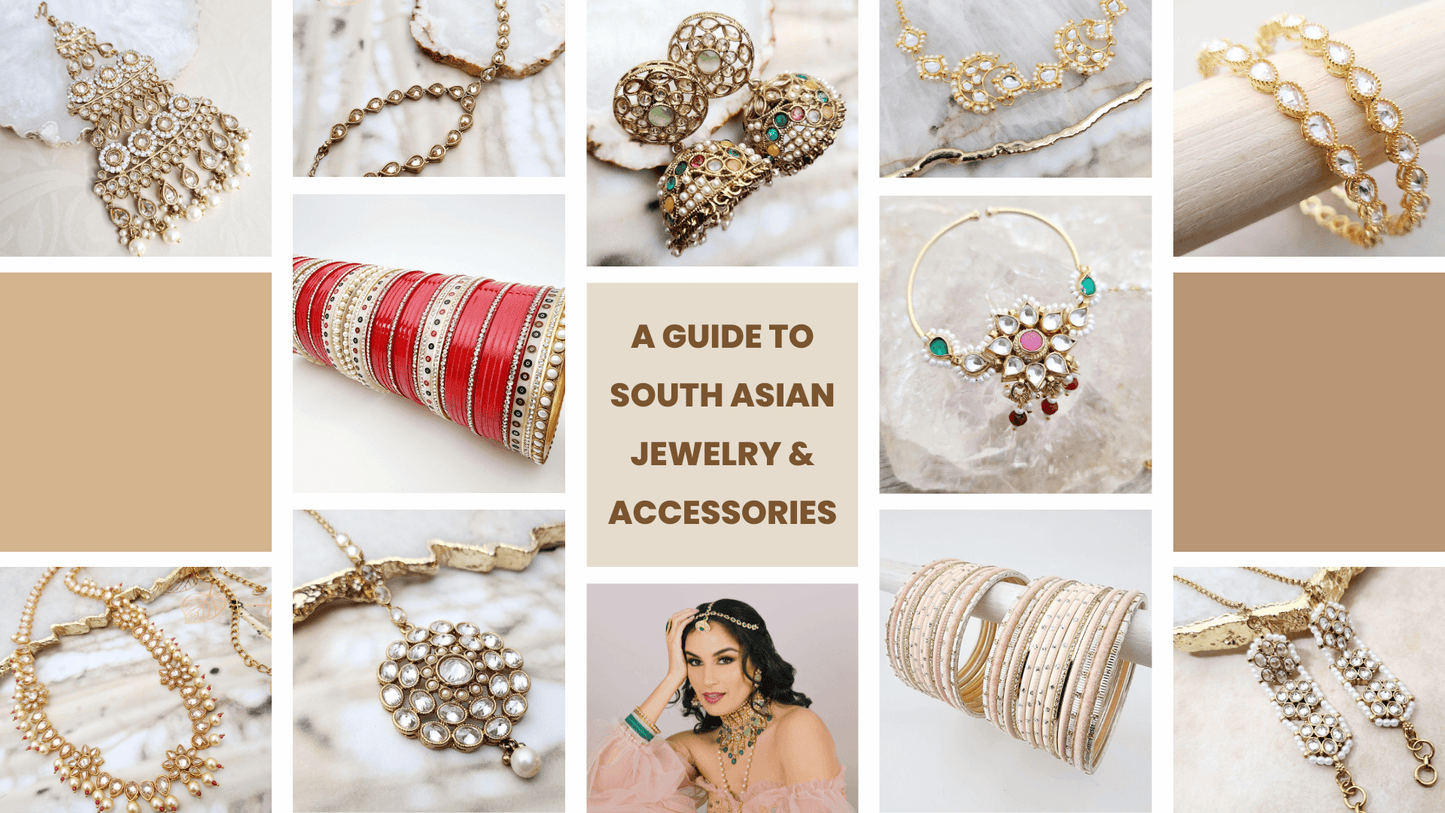
South Asian jewelry and accessories are essential to the region's cultural heritage. Each piece of jewelry has its unique significance, and people wear them on various occasions, including weddings, festivals, and religious events.
We will explore some of the most popular South Asian jewelry and accessories and their meanings.
Kangan or Bangles:
Kangan are thin, elegant bangles, often worn in multiples. It can be made of gold, silver, or other metals. Kangan bangles are popular among women of all ages and are worn on various occasions. They are also considered a symbol of marital status, and are often given as gifts during weddings and other events. In Tamil, these bangles are called Kaapus.
Choora or Chudiya:
Choora, Chudiya, Chudi, or Chuda are a set of red and white bangles, traditionally worn by Punjabi brides for the first year of their marriage. The bangles symbolize prosperity and fertility. In Tamil, these bangles are called Valayal or Valaivi.
Karra or Kada:
Karra or Kada are thick and wide metal bangles, typically popular among Punjabi women. It is a symbol of strength and eternity.
Tikka:
Tikka and Maang Tikka are headpieces that fall onto the forehead. They symbolize the third eye or wisdom. They are a significant part of the bride's wedding jewelry. Tikkas are typically smaller than Maang Tikkas.
Matha Patti:
Matha Patti is a forehead ornament, typically larger than the Maang Tikka. It consists of a chain or chains that run across the forehead and are attached to an elaborate centrepiece that rests on the hairline. It is typically worn by brides on their wedding day.
Jhumar:
Jhumar is a hair accessory worn on one side of the head. It is typically studded with stones and pearls and is commonly worn by brides.
Sahara:
Sahara is a type of accessory that hangs on the side of the face, usually attached to the earring by a chain. It is commonly worn by brides.
Jhumka or Jhumki:
Jhumka or Jhumki are bell-shaped earrings that are widely popular across South Asia. Jhumkas are available in various sizes and designs.
Nath or Poothali:
Nath or Poothali is an ornate nose ring typically worn by Indian brides on their wedding day. It is a symbol of marriage.
Hath Panja or Haathphool:
Hath Panja or Haathphool is a piece of jewelry worn on the hand that covers the wrist and fingers. It is typically worn by brides and signifies prosperity.\
Kamarband or Vaddanam:
Kamarband or Vaddanam is a waist belt, typically made of gold and often studded with precious stones. It is worn to hold up the saree or lehenga, which are traditional garments worn in the region.
Other Accessories:
- Payal or Kolusu: A anklet with small bells that jingle when worn, typically worn by women across South Asia.
- Mangalsutra or Thali: A necklace worn by married Hindu women as a symbol of their marital status. It is tied around the bride's neck during a Hindu wedding ceremony, symbolizing the bond between the couple.
- Baju Band or Vanki: An armlet worn on the upper arm, typically by brides.
- Bindi or Pottu: A decorative mark worn on the forehead, typically made of red or black powder and applied between the eyebrows.
- Pattam: A gold or silver headpiece worn by women in Tamil Nadu. It is typically made of gold or silver and is adorned with precious stones and intricate designs. The Pattam is usually worn on the forehead, with its chain gently draping around the head.
- Borla: A traditional Rajasthani headpiece worn by women, typically made of gold with a red stone.
South Asian jewelry and accessories are not just decorative pieces but an integral part of the region's cultural heritage. Each piece has its unique significance and is worn on different occasions to symbolize various aspects of life. From bangles to waist belts, South Asian jewelry and accessories are a testament to the region's rich cultural history and traditions.

At Banglez, we offer a wide range of South Asian jewelry and accessories, including many of the pieces discussed in this guide. Explore our collection and find the perfect piece to add to your own collection.




















